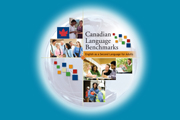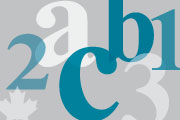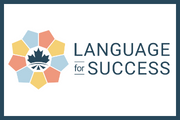
Numeracy
Discover the language in Numeracy
Numeracy requires finding, interpreting and conveying information related to numerical concepts. It involves listening, speaking, reading and writing, often in combination; for example:
- Locating and interpreting numbers and data in texts.
- Understanding numbers, data and numerical terms and concepts shared verbally or in writing.
- Following instructions for mathematical tasks.
- Giving instructions or explanations for mathematical tasks, using technical jargon where needed, and adapting language to suit the listener’s background knowledge.
- Sharing numbers, data and numerical concepts verbally or in writing.
- Describing patterns and trends.
- Using numbers and data to support opinions and draw conclusions.
Explore work-related examples at each CLB stage
The Canadian Language Benchmarks (CLB) describe communicative ability in English as a Second Language (ESL). The CLB organize 12 benchmarks into three stages of ability: Stage I (Basic), Stage II (Intermediate) and Stage III (Advanced).
Learners may already possess Numeracy skills but lack the English language to demonstrate them. For this reason, there is no direct correspondence between Numeracy and CLB levels.
The examples below show the language involved in demonstrating Numeracy.
![]()
Respond to a customer’s questions about prices.
![]()
Give simple directions, including distances, to a new co-worker.
![]()
Tell a supervisor that your overtime hours were not included in the latest pay period and request a review.
![]()
Read a simple schedule to identify work shifts.
![]()
Follow routine measuring and mixing instructions.
![]()
Keep a personal record of hours worked to calculate pay expected.
![]()
Complete a time sheet by entering days and times worked.
![]()
Listen to a software salesperson explain differences in features and costing of various plans to determine the best value.
![]()
Listen to identify facts and opinions in a conversation about an employee profit-sharing plan to determine own position.
![]()
Work with a small committee to organize and estimate the cost of a catered staff luncheon.
![]()
Respond to a customer’s questions about prices, discounts, and invoice charges.
![]()
Interpret a graph to explain sales trends during a meeting.
![]()
Enters sales figures and data onto a spreadsheet; draw conclusions about trends illustrated in the data; write a brief summary to share with the management team.
![]()
Create and manage a small operating budget for office expenses.
![]()
Listen to a financial advisor give advice about tax planning; determine whether to follow the advice.
![]()
Work in a team to plan and develop an operating budget for a project; include detailed expenses for staffing, materials and technology, as well as estimated revenue.
![]()
Read an analysis of an industry’s financial trends in a company newsletter.
![]()
Represent employee satisfaction survey results in tables and graphs, and provide a written interpretation of the data in a quarterly report.
![]()
Write a detailed proposal with a budget intended to secure a contract from a new client.
![]()
Write an evaluation report to present an analysis of the financial strengths and challenges of a product or service, and to offer recommendations.









